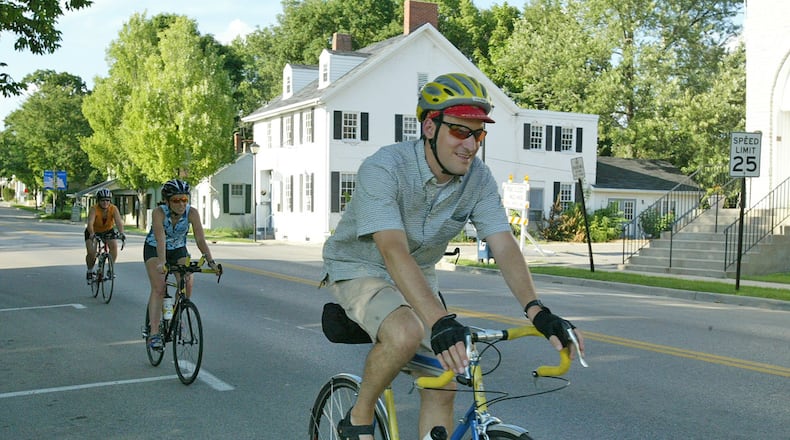Other medium-sized cities in Ohio — including Toledo, Akron, and Canton — all saw larger population losses than Dayton. Of the state’s three largest cities, Columbus gained, Cleveland lost and Cincinnati roughly stood still.
Overall the nine-county Dayton region grew by .2 percent from 2015 to 2016, according to population estimates for Warren, Butler, Miami, Greene, Montgomery, Darke, Preble, Clark and Champaign counties. But several local cities showed percentage drops, including Cedarville (-1 percent), Greenville and Sidney (-.8 percent), Oakwood (-.4 percent) and Kettering (-.3 percent) .
Population winners included Springboro and Waynesville (1.4 percent), Fairborn (.7 percent), and Tipp City, Troy and Bellbrook at .5 percent each.
The data marks the first time the Census released 2016 population estimates down to the community level. The estimates were created using county-level counts from birth, death and migration records; the Census then distributes county-level estimates down to cities and towns based on the number of occupied housing units, average persons per household and other factors.
Springboro City Manager Christine Thompson said the growth there is not surprising as businesses have been expanding and new housing has continued to be built. The city has about 200 acres of developable land left, and has long predicted the population will top out at about 23,000. The current estimate is 18,452.
“It looks like we are on track to hit that within the next decade,” Thompson said.
Dayton’s downward population trend has been consistent, so the slowing to near zero, if accurate, is a good sign for the urban core.
In 1980, Dayton had 203,371 residents. By 2010, the city’s population had fallen to 141,527.
The 2016 population was estimated at 140,489.
“The thing about the estimates is that they are just that, estimates. The real telling numbers come every 10 years,” said Tony Kroeger, Dayton city planner. “But I agree with the overall trend that they are showing and that is that we aren’t having the declines that occurred say from 2000 to 2010.”
He cited the amount of new housing going in downtown as one indicator of population gain in that part of the city, “We also have experienced rehab in some of our neighborhoods outside of downtown, including the introduction of international migration and the rehab of homes in, for example, the Old North Dayton neighborhood,” he said.
April home sales in the Dayton area were the strongest on record, according to the latest figures from the Dayton Area Board of Realtors.
RELATED: April home sales set record in Dayton area
Oakwood City Manager Norbert Klopsch said true population figures won't be known until the next decennial Census in 2020.
Columbus gained a new ranking based on the new numbers. By adding 10,000 people to reach a population of 860,090, Ohio’s capital surpassed Indianapolis as the nation’s 14th most populous city, growing by 1.2 percent.
RELATED: Columbus passes Indianapolis as 14th largest city
Columbus is now the second largest city in the Midwest behind Chicago, which had an estimated population of 2.7 million, down slightly from the last estimate.
Cleveland and Cincinnati didn’t fare as well, however. Cleveland’s population declined by .5 percent to 385,809, according to the estimates, while Cincinnati’s population growth was listed as zero percent, gaining fewer than 150 people to reach 298,800.
Continuing a longstanding trend, the fastest growing cities in the U.S. were all in the South and West. Texas took the top three spots with Conroe growing 7.8 percent, Frisco 6.2 percent and McKinney at 5.9 percent.
The South and West also saw the most growth among small towns and mid-sized cities. Midwest small towns declined by .3 percent on average since 2015.
About the Author
